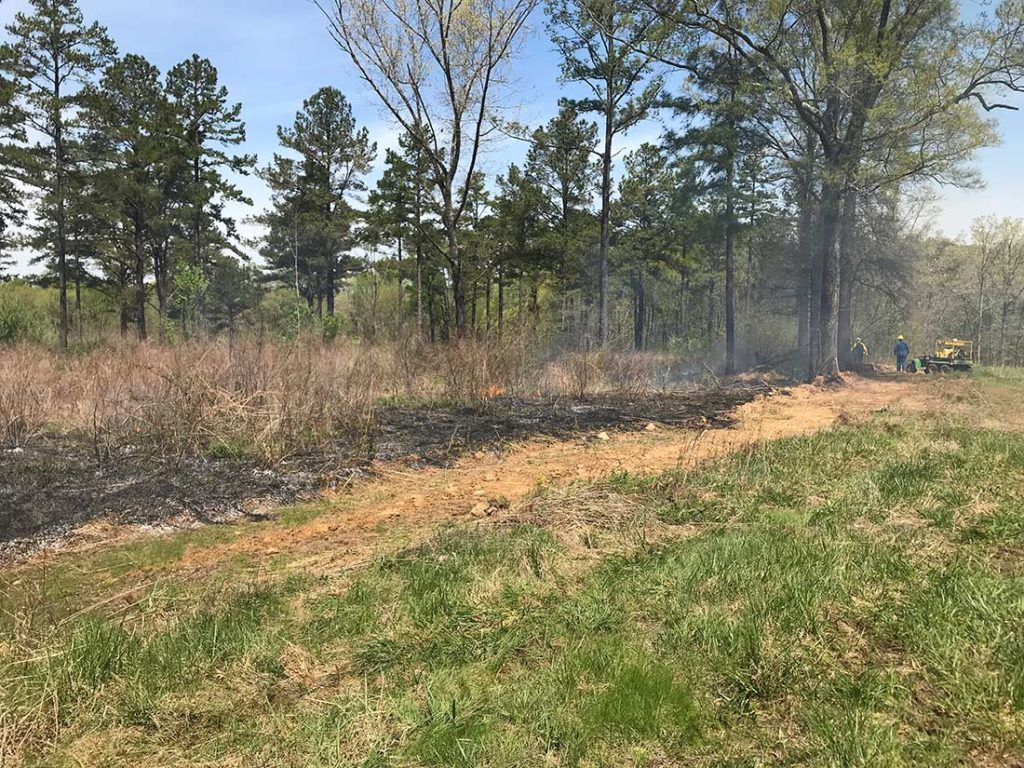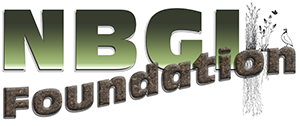You’re fired up about fire in every way…until you suddenly find yourself in charge of the prescribed fire on your own land. It was fun when you helped apply fire at the burn workshop when you were surrounded by professionals with more hardware than the Marine Corps. You successfully completed the Certified Prescribed Burn Manager’s Course from DOF. You applied for a federal incentive program to burn on your land and were accepted into the program, insuring most costs would be offset. And then it was time to burn. That’s where your confidence deflated as fast as a tractor tire breached by a honey locust thorn. Nightly News visions of fire tornados, and candling lodge pole pines fill your mind as you shakily bend over to light the first spot of fire. The same pictures designed to make fire look fun…the ones with a young burner, yellow clad and geared up dripping fuel in front of a wall of native grass flames now give you pause. That, or you decided to forget doing it yourself and hire a prescribed burn contractor but were unable to find one..

Agencies and NGOs, have worked hard over the last decade to improve our professionalism when it comes to prescribed fire. When I came to DWR (then DGIF – 26 years ago) we really had no set standards other than “Wear leather boots, cotton pants and shirts and bring some leather gloves for the burn next week.” Over the last two decades we have steadily become a professional prescribed fire organization. Why? In order to continue to apply fire in a more congested landscape, we cannot afford mishaps. We have to set the example…no room for errors (other than a few minor ones). Our crews also may need to fight wildfires on agency lands. Our fire teams have to be prepared for worst case scenarios and our equipment and training reflect that.
But is all this necessary for a private landowner wanting to burn a five acre pollinator field to help regenerate habitat? That’s not an easy question to answer. Statistics from the National Wildfire Coordinating Group (NWCG) show that most people are injured or killed on small fires with light fuels. There’s lots of reasons for this but one is overconfidence. Small doesn’t necessarily mean easy. So how do we balance trying to see more prescribed fire used on private lands with safety and professionalism?
Many things have been done to help. One of the biggest was the beginning of a Certified Prescribed Burn Manager’s course back in the late 90s. Led by the Virginia Department of Forestry (the agency responsible for fire in our state), with help from partners, the comprehensive course has certified over 1,200 burners statewide. These are forestry consultants, agency professionals and private landowners. The course provides a burner with some liability protection. By becoming certified, due diligence is shown. Burn plans done for federal habitat incentives programs must be completed by a certified prescribed burn manager (preferably an experienced one).
Other steps include: keeping website links with contact information for contract burners. These professionals assume liability and conduct the fire on private lands for a per acre fee. Their assumption of liability relies on prerequisites such as having good fire lines installed and having a sound burn plan, which they often develop themselves. Developing new educational materials like the booklet “Beyond the Bonfire: A Primer on Prescribed Fire for Virginia’s Private Landowners.” Building out the private lands component of the Virginia Prescribed Fire Council. And conducting multiple prescribed fire workshops for private landowners (Learn and Burns), not to mention continued outreach in print and social media to the benefits of prescribed fire for wildlife and forest health.
And while the increase in training, professionalism and cooperation has increased prescribed fire on agency and NGO partner lands, burning on private lands continues to lag behind. In 2019 the private lands subcommittee of the Virginia Prescribed Fire Council met with several invited private consultants and landowners with the overall goal of “Increasing prescribed fire on Virginia’s private lands safely and effectively.” This is a summary of the resulting ideas.
Three objectives were derived from the goal:
Objective 1 – Increase the capacity of private landowners to have prescribed fire applied on their lands – recommendations include:
- Develop regional prescribed fire cooperatives led by local NGOs, volunteer firefighters, private landowners with equipment, etc. – idea is “neighbors helping neighbors.”
- Update lists of contractors providing prescribed fire services (including Department of Forestry) and make them widely available via internet, web links, etc. – VPFC can serve as clearinghouse. VPFC already allows contractors to add themselves to the list via the website https://www.vafirecouncil.com/ .
- Determine the best first contact for landowners desiring to have fire applied to their lands and a streamlined protocol.
- Make landowners more aware of financial incentives through federal programs for fire line installation and prescribed fire.
- Increase awareness of contractors / consultants of the availability of affordable one day underwritten liability insurance for burners.
Under objective 2 – Increase landowner’s ability to safely and effectively apply prescribed fire on their own lands themselves – recommendations include:
- Complete “Beyond the Bonfire” and get it posted electronically and have hardcopies printed and made available (done on both counts: https://www.vafirecouncil.com/ ). Done – Hardcopies available by request or via one of our private lands team.
- Hold at least one “Learn and Burn” annually, and increase capacity through time to provide one per geographic region – mountains, piedmont and coastal plain annually. Learn and Burns need to be conducted using equipment landowners may have, and tools readily available from neighbors, volunteer fire departments, etc.
- Develop an apprentice or mentor burn manager’s program. Seriously interested landowners could be invited to observe burns led by professionals on agency or NGO lands.
- Burning cooperatives could contribute to this objective. The cooperatives could also provide equipment such as UTVs with water tanks, drip torches, fire rakes, back pack sprayers and even some Nomex clothing such as coveralls.
- Continue to solicit feedback from landowners about impediments to prescribed fire.
Under objective 3 – Increase outreach and education for private landowners about the benefits of prescribed fire – recommendations include:
- Coordinate and share outreach messages among all major entities such as VPFC, DoF, DCR, Virginia Forestry Association, Association of Consulting Foresters, Society of American Foresters, The Wildlife Society, etc.
- Develop a “fire learning trail” and list of sites that landowners can visit to see the ongoing positive effects of fire.
- Develop a series of articles for the Virginia Forest Landowner’s Association magazine “Virginia Forests” (Done – Winter 2021 issue dedicated to fire – issues available upon request).
As with every idea in life, someone has to step up and lead to make it happen. For my part – things like this BLOG are what I can do. If there are those of you out there who want to take one of these ideas and light it…then get on with it. You might start with participation on the Virginia Prescribed Fire Council – membership is as easy and going on their website and signing up (www.vafirecouncil.com ). Then attend the meetings and volunteer to lead. In reality, landowners will have to use their own initiative to make some of these things happen. It is not solely up to agencies with limited staff and highly varied missions to make fire happen on private lands. We continue to work towards improving things and it is a life-long effort….a burning desire to see the flames of positive change you might say.







